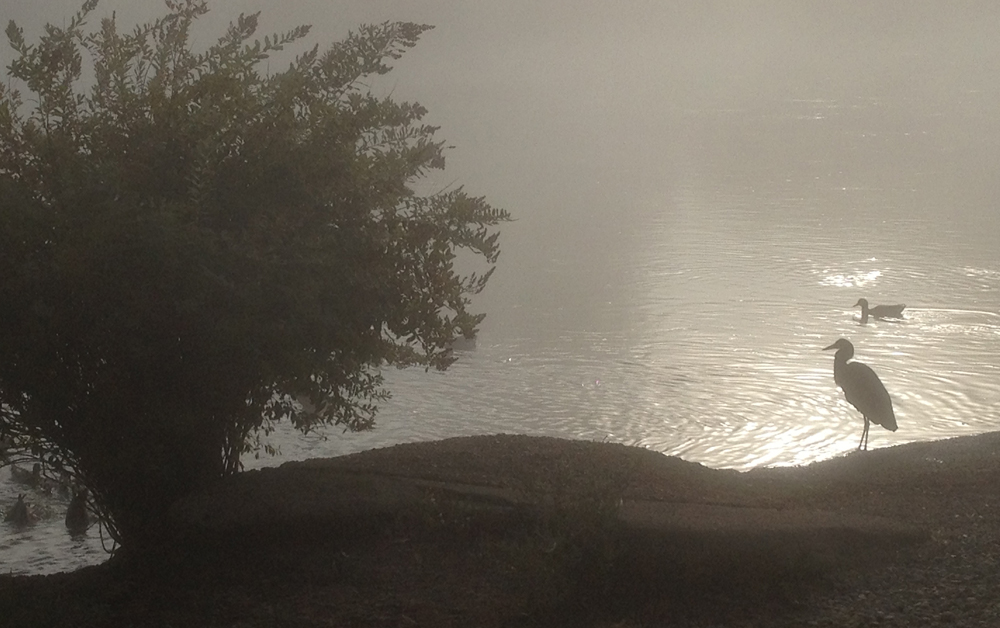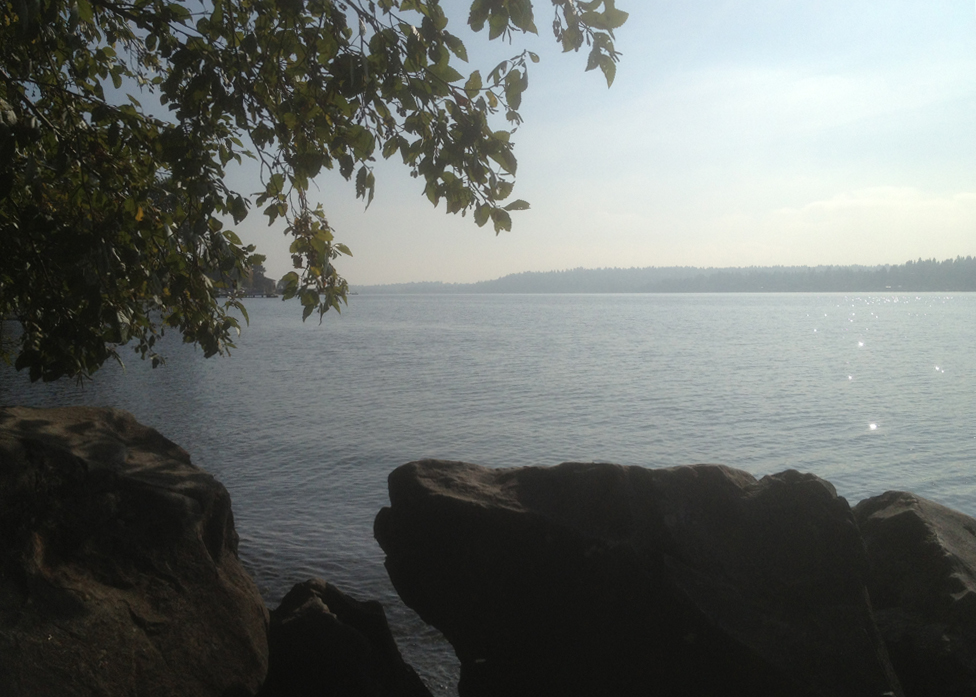Today is Blog Action Day 2012, and bloggers around the world are thinking and writing about “The Power of We,” highlighting themes of community, equality, and freedom. What better day to talk about the wider circle of friends taking part in human lives—the trees, animals, plants, and soil of the places where we live?

Heron & duck on a foggy morning at the Willamette River, Corvallis, OR
It is common to regard nature as the backdrop to human life—the scenery behind the “real” action. As if nature is incidental, not foundational to our lives. As if our lives would look exactly the same if they were lived in another landscape entirely. We’ve tried as hard we could to standardize our experience of nature, reproducing green lawns and importing garden plants from elsewhere to fit some uniform—and bland—model of suburbia. I think of something I heard Bill McKibben say, which I quoted in the book:
Most of us have only a vague idea of which animals or plants are native to our region or how they evolved together over eons. In cities or suburbs, where 80 percent of Americans live, people drift atop markerless seas of concrete and mowed grass, with no remnants of native landscape to tell them exactly where, on Earth, they are. Climate change leader Bill McKibben goes so far as to call suburbs, with their miles of clipped lawns, “a device for making sure you never notice the natural world.”
—from Kissed by a Fox

St Edward State Park, Seattle, WA
I am traveling on book tour at the moment, being introduced to rivers and trees and rocks I’ve never met before, getting to know each land-community along the way. The people in each city reflect the nature with which they live—muted colors and black raincoats in Seattle in harmony with the shadowed, ever-moist sky; bright clothing and sandals in the Central Valley of California, where the land is open to a blazing sun.
Just as we receive more sustained pleasure from keeping company with our dog than from a momentary glimpse of a wolf in the wild, so also the plants, birds, and rocks of the ground we inhabit offer a more sustained experience of friendship; they live in close proximity to humans, and so they are available on a daily basis to watch and wonder at, to learn to know as intimately as we would family members, and to develop a sense of kinship with over time.
—from Kissed by a Fox

Lake Washington on a sparkling afternoon in Seattle, WA
Here are a few of the land-communities I visited in the last week. Along with paragraphs from the book, they highlight the theme of “the power of we,” multiplied—cooperating not just with other human beings but also with the creatures and places where we live in the larger project of securing a good life of freedom for all.